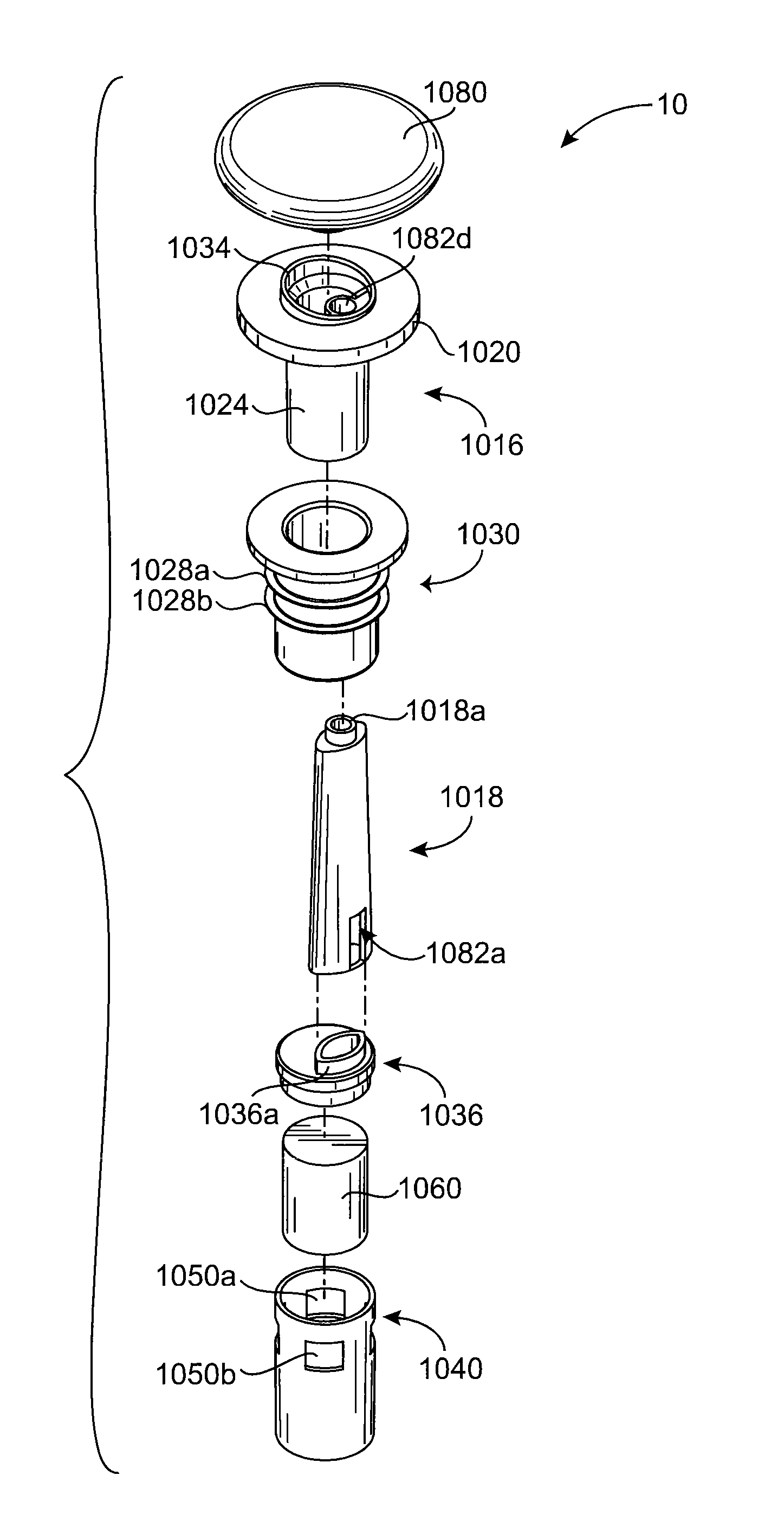Preservation device
a technology of a storage device and a lid is applied in the field of storage devices, which can solve the problems of wine becoming rancid, items quickly expiring, and potable liquids and foodstuffs having a limited shelf li
- Summary
- Abstract
- Description
- Claims
- Application Information
AI Technical Summary
Benefits of technology
Problems solved by technology
Method used
Image
Examples
Embodiment Construction
[0043]Generally, a preservation device is used to preserve liquids and other items, such as foodstuffs, which spoil or expire when exposed to oxygen for a period of time. The preservation device is configured to form an air tight seal when disposed on a bottle or vessel. The devices include a container that may preferably have an gas permeable, liquid impermeable membrane. Disposed within the container is an oxygen absorber, which removes oxygen remaining in the bottle or vessel after it is sealed by the sealing member of the preservation device. The preservation device may include a flow control mechanism that enables the liquid or other foodstuff to be dispensed from the bottle or vessel without requiring the removal of the entire preservation device from the bottle / vessel. Such arrangement enables the liquid / foodstuff to be dispensed while only allowing a minimal amount of oxygen to enter the bottle, which improves preservation qualities of the system as the oxygen absorber will ...
PUM
 Login to View More
Login to View More Abstract
Description
Claims
Application Information
 Login to View More
Login to View More - R&D
- Intellectual Property
- Life Sciences
- Materials
- Tech Scout
- Unparalleled Data Quality
- Higher Quality Content
- 60% Fewer Hallucinations
Browse by: Latest US Patents, China's latest patents, Technical Efficacy Thesaurus, Application Domain, Technology Topic, Popular Technical Reports.
© 2025 PatSnap. All rights reserved.Legal|Privacy policy|Modern Slavery Act Transparency Statement|Sitemap|About US| Contact US: help@patsnap.com



